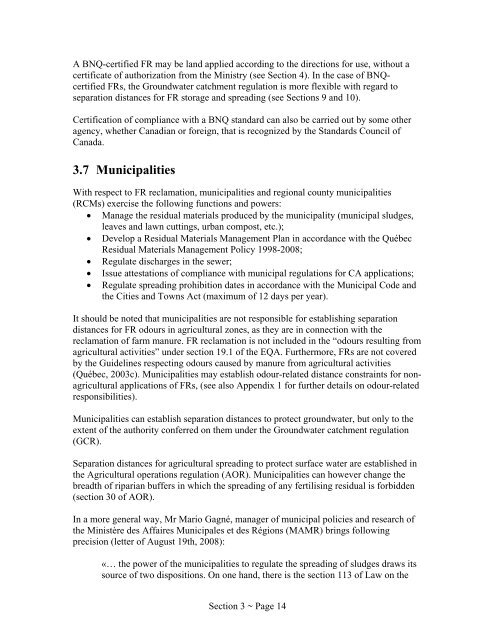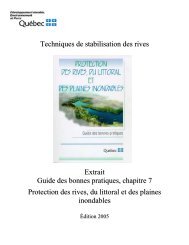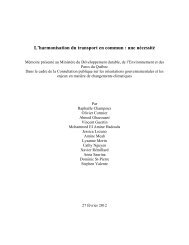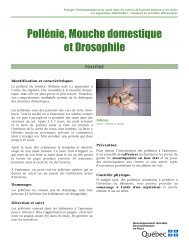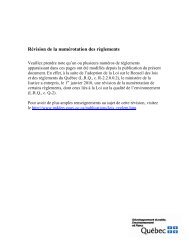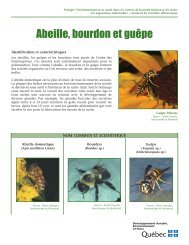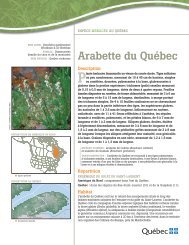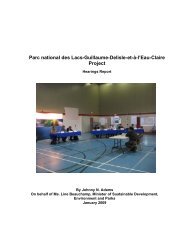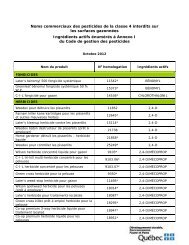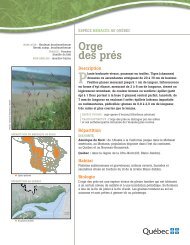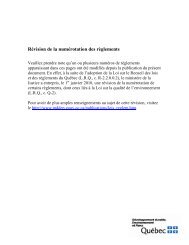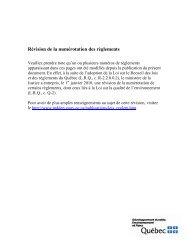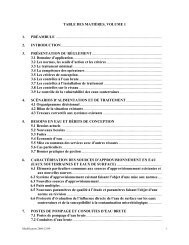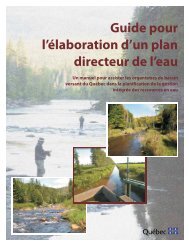Guidelines for the Beneficial Use of Fertilizing Residuals
Guidelines for the Beneficial Use of Fertilizing Residuals
Guidelines for the Beneficial Use of Fertilizing Residuals
You also want an ePaper? Increase the reach of your titles
YUMPU automatically turns print PDFs into web optimized ePapers that Google loves.
A BNQ-certified FR may be land applied according to <strong>the</strong> directions <strong>for</strong> use, without a<br />
certificate <strong>of</strong> authorization from <strong>the</strong> Ministry (see Section 4). In <strong>the</strong> case <strong>of</strong> BNQcertified<br />
FRs, <strong>the</strong> Groundwater catchment regulation is more flexible with regard to<br />
separation distances <strong>for</strong> FR storage and spreading (see Sections 9 and 10).<br />
Certification <strong>of</strong> compliance with a BNQ standard can also be carried out by some o<strong>the</strong>r<br />
agency, whe<strong>the</strong>r Canadian or <strong>for</strong>eign, that is recognized by <strong>the</strong> Standards Council <strong>of</strong><br />
Canada.<br />
3.7 Municipalities<br />
With respect to FR reclamation, municipalities and regional county municipalities<br />
(RCMs) exercise <strong>the</strong> following functions and powers:<br />
• Manage <strong>the</strong> residual materials produced by <strong>the</strong> municipality (municipal sludges,<br />
leaves and lawn cuttings, urban compost, etc.);<br />
• Develop a Residual Materials Management Plan in accordance with <strong>the</strong> Québec<br />
Residual Materials Management Policy 1998-2008;<br />
• Regulate discharges in <strong>the</strong> sewer;<br />
• Issue attestations <strong>of</strong> compliance with municipal regulations <strong>for</strong> CA applications;<br />
• Regulate spreading prohibition dates in accordance with <strong>the</strong> Municipal Code and<br />
<strong>the</strong> Cities and Towns Act (maximum <strong>of</strong> 12 days per year).<br />
It should be noted that municipalities are not responsible <strong>for</strong> establishing separation<br />
distances <strong>for</strong> FR odours in agricultural zones, as <strong>the</strong>y are in connection with <strong>the</strong><br />
reclamation <strong>of</strong> farm manure. FR reclamation is not included in <strong>the</strong> “odours resulting from<br />
agricultural activities” under section 19.1 <strong>of</strong> <strong>the</strong> EQA. Fur<strong>the</strong>rmore, FRs are not covered<br />
by <strong>the</strong> <strong>Guidelines</strong> respecting odours caused by manure from agricultural activities<br />
(Québec, 2003c). Municipalities may establish odour-related distance constraints <strong>for</strong> nonagricultural<br />
applications <strong>of</strong> FRs, (see also Appendix 1 <strong>for</strong> fur<strong>the</strong>r details on odour-related<br />
responsibilities).<br />
Municipalities can establish separation distances to protect groundwater, but only to <strong>the</strong><br />
extent <strong>of</strong> <strong>the</strong> authority conferred on <strong>the</strong>m under <strong>the</strong> Groundwater catchment regulation<br />
(GCR).<br />
Separation distances <strong>for</strong> agricultural spreading to protect surface water are established in<br />
<strong>the</strong> Agricultural operations regulation (AOR). Municipalities can however change <strong>the</strong><br />
breadth <strong>of</strong> riparian buffers in which <strong>the</strong> spreading <strong>of</strong> any fertilising residual is <strong>for</strong>bidden<br />
(section 30 <strong>of</strong> AOR).<br />
In a more general way, Mr Mario Gagné, manager <strong>of</strong> municipal policies and research <strong>of</strong><br />
<strong>the</strong> Ministère des Affaires Municipales et des Régions (MAMR) brings following<br />
precision (letter <strong>of</strong> August 19th, 2008):<br />
«… <strong>the</strong> power <strong>of</strong> <strong>the</strong> municipalities to regulate <strong>the</strong> spreading <strong>of</strong> sludges draws its<br />
source <strong>of</strong> two dispositions. On one hand, <strong>the</strong>re is <strong>the</strong> section 113 <strong>of</strong> Law on <strong>the</strong><br />
Section 3 ~ Page 14


